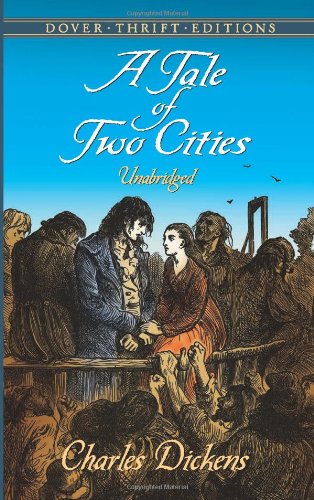All Nonfiction
- Bullying
- Books
- Academic
- Author Interviews
- Celebrity interviews
- College Articles
- College Essays
- Educator of the Year
- Heroes
- Interviews
- Memoir
- Personal Experience
- Sports
- Travel & Culture
All Opinions
- Bullying
- Current Events / Politics
- Discrimination
- Drugs / Alcohol / Smoking
- Entertainment / Celebrities
- Environment
- Love / Relationships
- Movies / Music / TV
- Pop Culture / Trends
- School / College
- Social Issues / Civics
- Spirituality / Religion
- Sports / Hobbies
All Hot Topics
- Bullying
- Community Service
- Environment
- Health
- Letters to the Editor
- Pride & Prejudice
- What Matters
- Back
Summer Guide
- Program Links
- Program Reviews
- Back
College Guide
- College Links
- College Reviews
- College Essays
- College Articles
- Back
A Tale of Two Cities by Charles Dickens
Charles Dickens’ A Tale of Two Cities centered around the complex love story of Sydney Carton for Lucie Manette during the French Revolution and the following Reign of Terror. In the first few chapters the reader is introduced to Jarvis Lorry, a secretive character employed by Tellson’s Bank for mysterious purposes, and Lucie Manette, a young woman surprised to find her father Doctor Alexandre Manette, a man held in a Paris prison for 18 years, is still alive and being cared for by a former servant. Lucie is reunited with her father, now suffering dementia, and Lorry accompanies the two of them back to England.
A half-decade later, Lucie and her recovered father are witnesses against Charles Darnay, an accused spy. Darnay’s fate looks grim until one of the main characters, an assistant by the name of Sydney Carton, calls into question the identity of the spy, as Darnay and Carton look both very alike. Darnay is acquitted due to lack of ability to determine if he was truly the man spying for France and the U.S.
Following Darnay’s trial, Darnay and Carton stay with the Manettes for a while, and both Darnay and Carton fall in love with Lucie. Carton, feeling unworthy of her attentions, does not propose to Lucie, who eventually weds Darnay. Carton, although not loved in return, promises that he would give his life in the stead of one she did love.
As the characters’ lives progress, France is quickly spiraling into revolution. One of Darnay’s servants is imprisoned and requests help from Darnay, who, as he travels to Paris to help the servant, is taken by French revolutionaries. Lucie, her daughter, and Doctor Manette soon leave for Paris with the intent of discovering the whereabouts of Darnay. They discover his imprisonment and are able to gain him a trial, but with little success; shortly after Doctor Manette manages to earn Darnay’s freedom he is arrested once more and sentenced to death.
Sydney Carton, meanwhile also in Paris, hears of Darnay’s sentence as well as a plot for Lucie and her daughter’s death. Keeping to his vow to Lucie, Carton secretly enters the prison in which Darnay is held and switches clothes with Darnay, who is in a drugged sleep. As the two men look alike, no one knows the difference. Lucie and her family are able to escape France while Carton goes to the guillotine with his famous line: “It is a far, far better thing that I do, than I have ever done; it is a far, far better rest that I go to than I have ever known” (Dickens 380).
I had very mixed feelings about the book. I did not much enjoy the story line, as I found it depressing and difficult reading. However, there were points in the story that required thought that led to introspective revelations and fascinating observations on humanity. Perhaps the first line that really appealed to my fancy was in the third chapter: “A wonderful fact to reflect upon, that every human creature is constituted to be that profound secret and mystery to every other… that every beating heart in the hundreds of thousands there, is, in some of its imaginings, a secret to the heart nearest it!” (Dickens 15-16). After reading this line I was struck with this so basic truth, and this book provided plenty of experiences like that in the first few chapters.
Although I did not overall enjoy the book I would recommend it to the dedicated reader or those who enjoy thinking on higher levels due to this book’s complexity in plot and diction along with its insights to life.
Similar Articles
JOIN THE DISCUSSION
This article has 0 comments.

